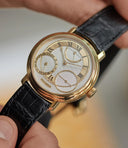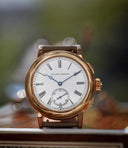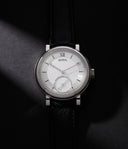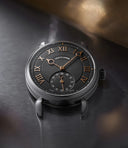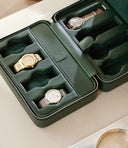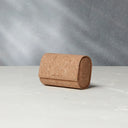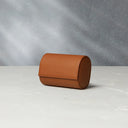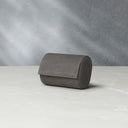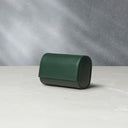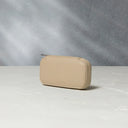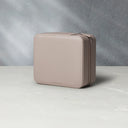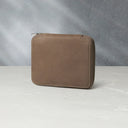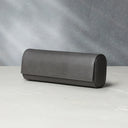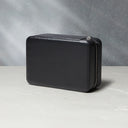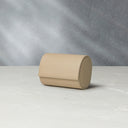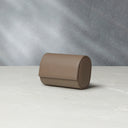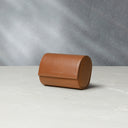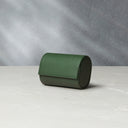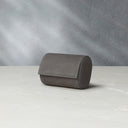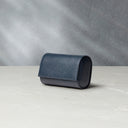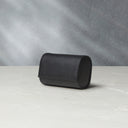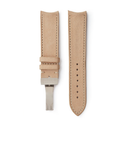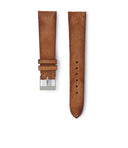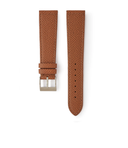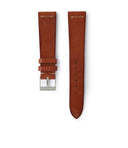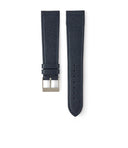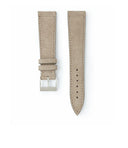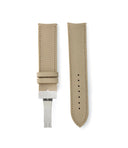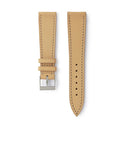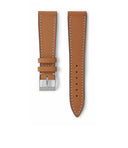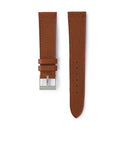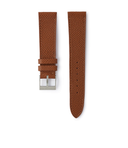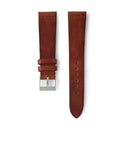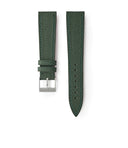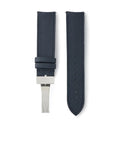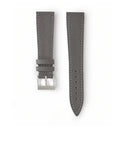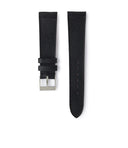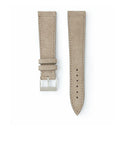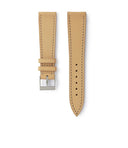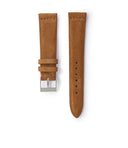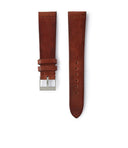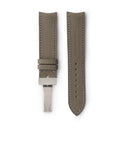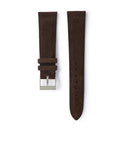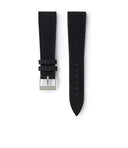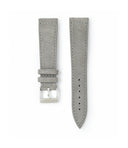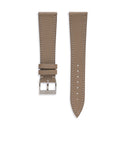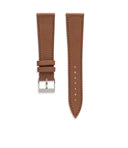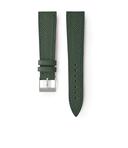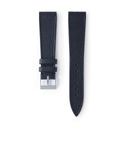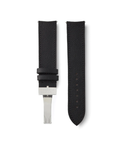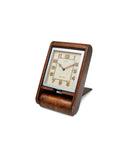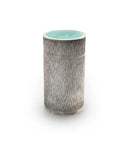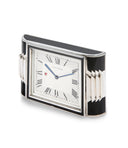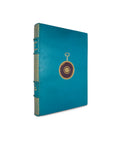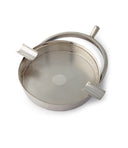
Borgel – The Master Casemaker You Haven’t Heard Of
By Tony Traina
Before wristwatches became waterproof, it was easy to see them as merely another form of jewellery, with very limited practical application. Rolex’s Oyster case, first released in 1926, often gets credit for commercialising the waterproof watch. However, there was another casemaker that patented a waterproof case before Rolex, and that would go on to produce them for many important Swiss watchmaking brands throughout the 20th century — François Borgel.

The inventiveness of Borgel's designs made it onto multiple watches over the years.
François Borgel’s waterproof cases became so well known that when Patek Philippe set-out to produce what would be its first waterproof watches, it seemed only fitting that it turned to Borgel. However, the Swiss casemaker's influence is felt far beyond just the most venerable of watch brands.
François Borgel: History
The Borgel story starts in 1891, when Genevan François Borgel filed Swiss patent CH4001 for a waterproof pocket watch mechanism, whereby the movement was screwed-in through the front of a one-part case and then sealed-off with a tightly-fitting bezel and crystal — this mechanism also meant the movement was dust-proof, another important innovation of the time.

An advert from 1894, showing the innovation of Borgel’s screw-in case, and making it very clear that it was patented technology.
During most of the 20th century, the Swiss watchmaking industry was primarily made of hundreds of different component manufacturers that specialised in manufacturing cases, dials, or movements— ébauches — that they would then supply to different brands. As one of these manufacturers, Borgel supplied its new waterproof watch cases — mostly pocket watches — to brands like IWC and Longines through World War I, after which the demand for wristwatches exploded.
In 1924, the Borgel Company, then still owned by the Borgel family, was sold to the Taubert family, forming the company Taubert & Fils (Taubert and Sons). For simplicity, when the rest of this article refers to “Borgel,” we mean Borgel, as acquired by Taubert & Fils. Around this time, another waterproof wristwatch also exploded onto the market: the Rolex Oyster case.

The original patent filed by Borgel and an example of an early wristwatch with it’s screw-in case, image via SJX with originals courtesy of Vintage Watchstraps.
In their book Rolex Wristwatches, An Unauthorized History, authors Jeffrey Hess and James Dowling note that in the 1920s Rolex produced a limited run of watches using the Borgel screw-in case. “It is a very important development in Rolex watch design. It was the first model produced by Rolex in which the case was specifically designed to give protection against some of the elements,” Hess and Dowling write.
In other words, the first true Rolex sports watches, were courtesy of Borgel. The Rolex Oyster case, released soon after, in 1926, is quite reminiscent of this Borgel screw case; in fact, Hans Wilsdorf and Rolex later purchased one of Borgel’s case patents. While evidence of the relationship between Rolex and Borgel at the time is mostly circumstantial, it seems quite apparent that the Oyster case design was at least heavily influenced by Borgel’s work.
By this time, Borgel’s patents protecting its original screw-in mechanism would have long expired (not to mention also having been surpassed by advancements from other manufacturers). Taubert & Fils recognised this, and iterated through various prototypes before arriving at its next case innovation, the one that it's most recognisable for, to vintage wrist watch collectors: the decagonal case.

An advert from 1939 showing an original Taubert & Fils decagonal watch case, courtesy of Clinique Hologere.
Originally, Taubert & Fils produced cases that were decagonal all the way through: bezel, caseback, even the midcase. This proved impractical for a variety of reasons, not to mention the fact that it was much less aesthetically pleasing. So, eventually, they settled on a system by which only the caseback was manufactured with 10 flat “decagonal” sides, and screwed tightly into the rest of the case with a special tool also provided by Taubert & Fils. Taubert’s patent on this design and vigorous defense of it meant that other casemakers were forced to use notches or other solutions in their casebacks so they could be screwed or unscrewed.
Borgel would go on to supply hundreds of thousands of decagonal cases to dozens of different brands, from well-known manufacturers like Patek Philippe and Vacheron Constantin, to lesser-known collector favourites like Mido, Movado, and West End Watch Co. This innovation, along with Borgel’s patented cork stem seal – obviating the need for a screw-down crown like that of Rolex’s Oyster case – was a significant step forward for water resistant watches.
From Historical Importance to Current Collectibility
Historical importance often begets future collectability. From the end of the 19th century, Borgel were at the forefront of creating and producing waterproof watches, first with its novel screw-in case design, then with the widely manufactured decagonal wristwatch case. Still, this history is often overlooked.
“Borgel is sadly perhaps one of the less recognised contributors to watch case development and design during the last half century and beyond,” collector Roni Madhvani reckons. He argues that, “its role in waterproofing the watch case and pushing the boundaries of watch design deserves a permanent seat in the horology hall of fame.”


A rare Patek Philippe ref. 565 with applied Breguet numerals and more importantly, a decagonal water resistant case back, courtesy of Hodinkee.
Today, Borgel is perhaps most recognised as the casemaker behind some of Patek Philippe’s most important references. The company started producing snap-back cases for Patek Philippe’s first Calatrava, the reference 96, using their existing designs, but soon persuaded the brand to use its patented decagonal screw-back case. This design is first seen in the Calatrava reference 438, but soon after in the reference 565, and in the inimitable chronograph reference 1463, among many other Patek references.
Borgel continued to produce cases for Patek Philippe until around the mid-1960s. For this historical importance, but also for their profound beauty, the references 565 and 1463 have become some of the most collectable of all vintage watches. The reference 565’s unique monocoque construction makes it immediately recognisable compared to nearly any other watch. Meanwhile, the reference 1463’s status as the only waterproof chronograph from the vintage-era of Patek Philippe sets it apart both in terms of rarity and importance.

A Patek Philippe ref. 1463 with tasti tondi pushers and a decagonal case back from Borgel, courtesy of Christie’s.
The daring innovation of Borgel’s waterproofing mechanism also pushed Patek Philippe into the modern era, allowing it to produce sports watches wearable for all types of activities. This opened up new markets for the Geneva watchmakers, and it's still reaping the benefits to this day. These vintage Borgel cases are robust and wearable, even by modern standards.
“Its role in waterproofing the watch case and pushing the boundaries of watch design deserves a permanent seat in the horology hall of fame.”
However, collecting Borgel cases is fun, not only because they produced cases for some of the most desirable vintage references from the likes of Patek Philippe and Vacheron Constantin, but also because they did so for affordable, everyday brands.

Two Movados, featuring the same water resistant technology as the above Patek Philippe’s, courtesy of the author.
“In the 21st century, cases stamped ‘FB’ have come to occupy an unusual position, simultaneously filling the role of ultra-desirable high-point (Patek’s ref. 565, 1463, 1563), and reasonably-priced value sector (Mido’s Multi-centerchrono and Multifort, various Movado), effectively democratising the enjoyment that comes with owning such a watch,” Josh Rankin, collector and founder of dealer Stetz & Co., said. Part of Borgel’s charm is that a collector can pick-up one of these reasonably-priced watches from Mido or Movado, knowing it utilises the same patented waterproof case design as a reference 1463, that might have a few more zeros on the price tag.
While the case of the references 565 and 1463 might be more refined and elegant than those produced for other brands, the sharp angles and facets of Borgel’s designs still make them instantly recognisable. Whereas Patek Philippe’s Borgel cases are fluid, those for brands like Mido and Movado are often more rigid and angular, making them feel more like the “working man’s Patek.”


The recognisable ‘FB and Key’ and British Patent number that can be seen inside the case back of nearly all Borgel cases, courtesy of Catawiki.
Besides their decagonal case backs, Borgel case backs will typically have the Borgel “FB and Key” stamped on the inside to signify their manufacturer. Sometimes, the inside of the case back may only be stamped “BRIT PAT 385509,” the British patent registration number for the Swiss patent on Borgel’s decagonal design.
Besides Patek Philippe, one of the most notable brands that used Borgel cases throughout the mid-20th century was Movado, producing in-house chronographs and Calatrava-style time-only watches that you’d be excused for thinking might have a more expensive name printed on the dial.
Perhaps the most beautiful of these are the rare examples that use Patek Philippe’s vaunted reference 565 case to house Movado’s in-house M90 chronograph calibre. The result is a timepiece combining the best of both worlds from Borgel, capturing both the manufacturer’s elegance and accessibility: a refined case, typically reserved for peerless Patek Philippe, but used here by a brand typically associated with more affordable watches.
The Case for Borgel
“The left brain pragmatist in us can appreciate the multiple patents introduced by Borgel that enable their watches to achieve a new level of functionality,” says Rankin. “While the right brained aesthete recognises a superior level of detail with its own distinct fingerprint.”
Watches have always been part art, part science. Part form, part function. Perhaps no casemaker captures this balance as capably as François Borgel. He made watch cases waterproof, then made them beautiful. Waterproof watches, that is, every modern sports watch, would be very different today without the historical contributions of Borgel and Taubert & Fils.
As Madhvani points out, Borgel pushed the boundaries of watch function and design throughout the 20th century. It’s this rare combination of historical importance and timeless beauty that makes Borgel-cased watches so special and collectible.
























































































